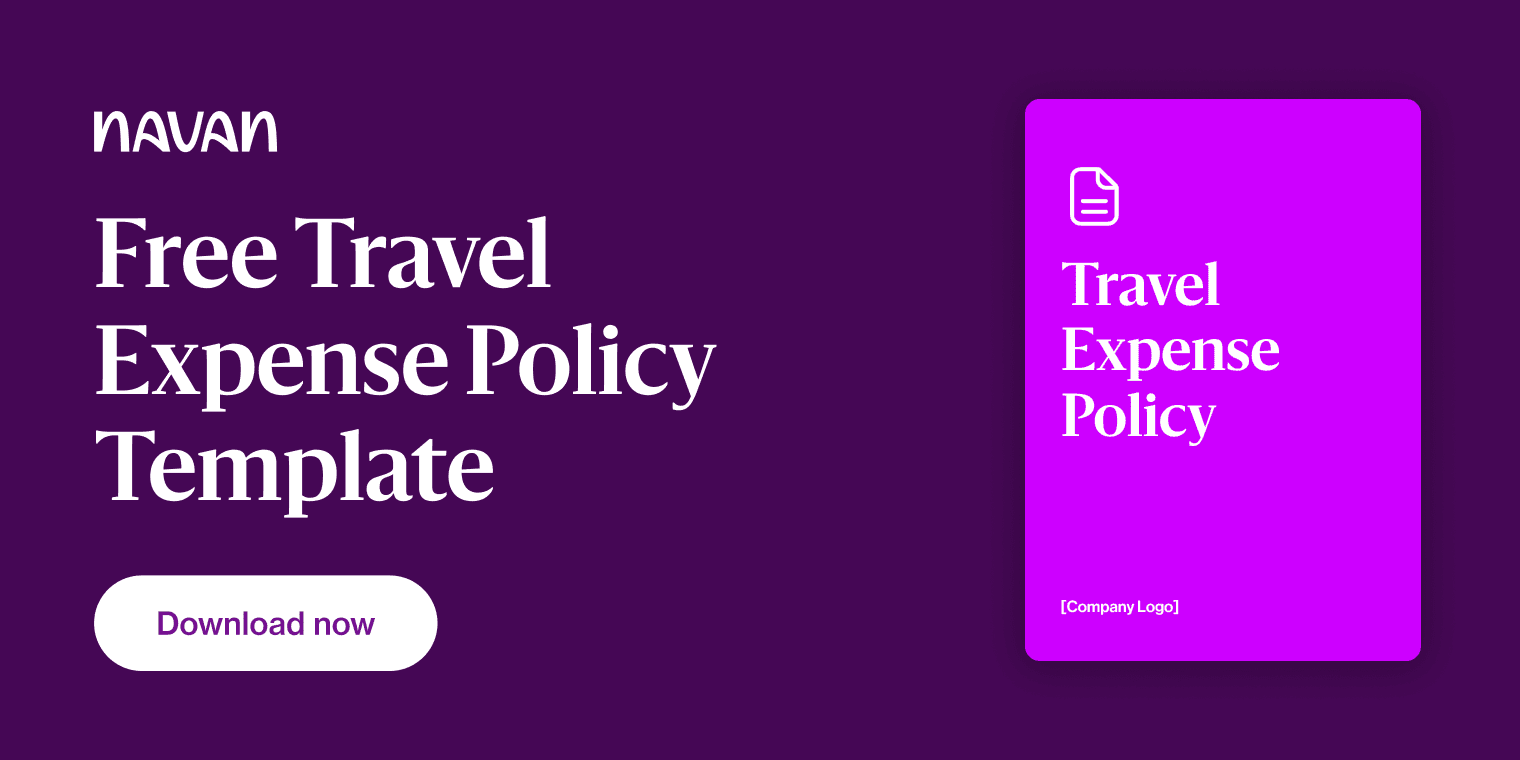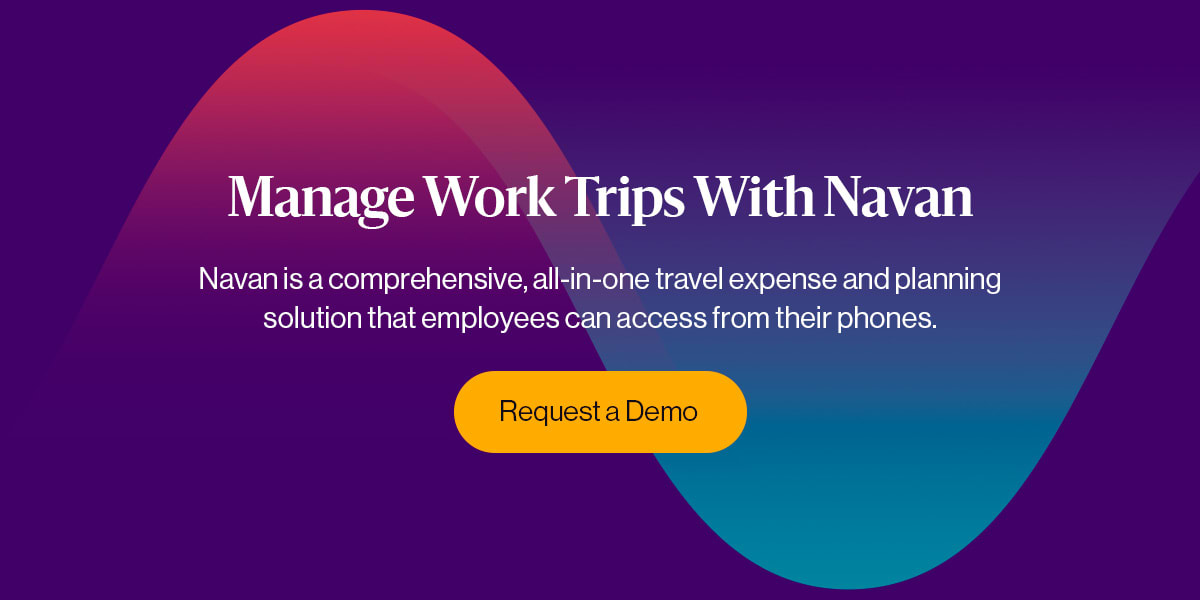Corporate Travel Safety: How to Help Protect Traveling Employees

Corporate travel fuels global business growth by allowing companies to forge stronger partnerships, seize new opportunities, and expand their reach in an increasingly interconnected world. However, business trips come with inherent risks — from health concerns and geopolitical instability to cyber threats and logistical disruptions.
Organizations must prioritize employee well-being by implementing proactive safety measures, developing risk management strategies, and leveraging technology to help protect travelers. By adopting a structured approach to corporate travel safety, businesses can fulfill their duty of care obligations, minimize risks, and create a more secure environment for employees on the road.
This article explores some key strategies, benefits, and technology around corporate travel safety.
Understanding Corporate Travel Safety
Corporate travel safety encompasses the policies, protocols, and technologies designed to help protect employees from physical, health, and security risks during business trips. A comprehensive safety strategy allows employees to be well-prepared, supported, and equipped to handle unexpected challenges while traveling.
Corporate travel comes with several key risk factors that organizations must address to keep employees safe.
Health risks, for example, can arise from exposure to unfamiliar diseases and limited access to medical facilities.
Security threats — such as crime, political instability, terrorism, and civil unrest — can pose serious dangers in certain regions. Security issues can also arise when business travelers connect to unsecured networks and expose themselves to a higher risk of cyberattacks and data breaches.
Logistical challenges, including flight cancellations, visa complications, and accommodation issues, can also disrupt travel plans and create unnecessary stress. These challenges may extend to cultural sensitivities; understanding local laws, customs, and etiquette can help travelers avoid legal or social conflicts.
Key Strategies for Promoting Travel Safety
A comprehensive corporate travel safety strategy requires a multi-layered approach. By implementing the following key strategies, companies can mitigate risk and better support traveling employees.
1. Conduct Thorough Risk Assessments
Before approving business trips, organizations should assess the safety conditions of the travel destination. This includes analyzing government travel advisories, evaluating health risks, and identifying high-crime areas. Leveraging risk management platforms and apps can help businesses stay informed and automate this part of the process.
2. Provide Pre-Travel Training
Training employees on travel safety is essential for their well-being and security. Training should cover personal safety awareness, emergency response actions, cybersecurity best practices, and local customs. Educating travelers on these topics helps them make informed decisions, avoid risks, and handle emergencies.
3. Establish Clear Communication Channels
Traveling employees need a dependable way to stay connected with their companies. Businesses should offer 24/7 emergency support, make sure travelers have international roaming or Wi-Fi access, and utilize mobile apps with real-time alerts and location tracking. A well-structured communication plan keeps employees more informed and secure.
4. Implement Emergency Response Plans
Companies must establish clear protocols for managing emergencies, including medical incidents, natural disasters, and security threats. A well-defined response plan should designate emergency contacts within the organization, outline evacuation procedures and medical assistance options, and provide immediate access to local authorities and embassies.
5. Support Mental Health and Well-Being
Frequent travel can contribute to burnout, stress, and fatigue. According to research conducted by the American College of Occupational and Environmental Medicine, business travel is linked to increased smoking, alcohol use, alcohol dependence, lack of physical activity, poor sleep habits, anxiety, depression, and other health concerns.
It’s essential for organizations to prioritize traveler well-being by giving employees sufficient rest and recovery time, providing access to mental health support services, and promoting a healthy work-life balance during trips.
Benefits of Implementing Travel Safety Protocols
Focusing on corporate travel safety can benefit both employees and businesses by improving security, compliance, and efficiency.
Here are some of the advantages of proactively implementing travel safety protocols:
Improved Employee Well-Being
A well-structured safety program gives employees peace of mind, allows them to focus on their work rather than worrying about potential risks, and can contribute to higher job satisfaction and retention.
Compliance with Duty of Care Obligations
Companies have a legal and ethical responsibility to protect employees while they travel. Implementing travel safety measures helps organizations meet duty of care compliance requirements and avoid legal consequences.
Reduced Financial Losses from Travel Disruptions
Unforeseen events such as flight cancellations, security threats, or medical emergencies can result in costly delays. A proactive safety strategy minimizes financial losses by preparing employees for contingencies.
Navan’s Innovative Strategy for Traveler Safety
Navan takes a proactive approach to corporate travel safety by equipping companies with the tools needed to uphold duty of care and mitigate risks. By fostering a culture of transparency, leveraging AI-driven technology, and maintaining constant accessibility, Navan helps organizations protect employees while strengthening trust.
Navan’s 360-degree strategy emphasizes clear communication, real-time data, and personalized support, helping travelers feel safe and supported in any situation.
Read more about Navan’s modern approach to duty of care.
Steps to Develop a Corporate Travel Safety Plan
Creating a corporate travel safety plan involves careful assessment, planning, and continuous monitoring. Here are the recommended steps for creating a comprehensive corporate travel safety plan:
Step 1: Assess Current Travel Policies
Organizations should evaluate their existing travel policies to identify gaps and areas for improvement. This includes reviewing safety protocols, insurance coverage, and employee training programs.
Step 2: Identify Potential Risks
Analyzing past travel incidents and consulting with risk management experts helps businesses understand the challenges employees may face in different regions.
Step 3: Develop Comprehensive Safety Protocols
Establishing clear safety guidelines helps employees know what to expect and how to respond in different scenarios. This includes emergency contacts, communication plans, and health and security measures.
Step 4: Implement and Train Employees
Once policies are in place, companies must train employees to help them understand and follow safety protocols. Regular training sessions reinforce best practices.
Step 5: Continuously Monitor and Improve
Travel risks evolve over time. Organizations should regularly review and update safety policies to align with changing travel conditions and emerging threats.
Leveraging Technology for Travel Safety
Advanced technology plays a crucial role in improving corporate travel safety. Companies can utilize:
Real-Time Risk Intelligence Platforms
These platforms provide live updates on security threats, weather conditions, and health risks, allowing businesses to make informed decisions about employee travel.
Traveler Tracking and Mobile Safety Apps
GPS-enabled apps help businesses monitor employee locations, send emergency alerts, and provide instant access to safety resources.
Predictive Analytics for Travel Disruptions
AI-powered tools analyze historical travel data to predict potential disruptions and make proactive itinerary adjustments to minimize risks.
24/7 Support
Travel management platforms like Navan offer round-the-clock support to assist employees with any travel-related issues, from managing flight rebooking to organizing evacuations. With immediate assistance available at all times, employees can travel with confidence, knowing help is always just a call away.
Meet Navan
Navan offers a comprehensive corporate travel safety solution that helps protect employees and simplify risk management. With Navan’s real-time risk assessments, for example, businesses receive instant security updates and travel advisories.
The platform includes GPS-based traveler tracking for effective emergency response coordination and automated compliance tools to uphold travel safety standards. In case of medical, security, or logistical issues, 24/7 emergency assistance is available to support travelers.
By integrating these essential safety measures, Navan helps businesses safeguard employees and manage corporate travel risks more effectively.
The Importance of Prioritizing Corporate Travel Safety
Corporate travel safety is crucial for safeguarding employees and maintaining uninterrupted business operations. With solutions like Navan, businesses can proactively manage travel safety and provide employees with the security and support they need. Investing in travel safety today provides for a safer, more efficient, and legally compliant travel program for the future.
Is your organization ready to take corporate travel safety to the next level? Book a demo to learn all about Navan’s all-in-one travel and expense management solution.
This content is for informational purposes only. It doesn't necessarily reflect the views of Navan and should not be construed as legal, tax, benefits, financial, accounting, or other advice. If you need specific advice for your business, please consult with an expert, as rules and regulations change regularly.


